The ROG Mothership's otherworldly fusion of power and portability boosted my work and play
For many of us, desktop PCs are the last word in computing power. Nomads on the cutting edge of gaming and creating might need to pack up and hit the road at a moment’s notice, and you just can’t do that with a traditional desktop. The Republic of Gamers has long catered to demanding digital nomads with some of the most powerful desktop replacement systems around, but the ROG Mothership uses an all-new cooling design to achieve our most potent blend of power and portability yet. I’ve been privileged enough to get extended time at the Mothership’s helm, and it’s delivered high frame rates and short render times as I’ve used it for both gaming and content creation.
Want to get some hands-on time with the ROG Mothership for yourself? Check it out in person at b8ta San Francisco - Mission Bay.

The free-standing design, unique in its class, set new standards for power and portability for a desktop-replacement system when it first landed among us Earthlings. The monolithic, towering body of this system raises its cooling intakes and exhaust vents far above tables and desks to provide unfettered cooling airflow to the components inside.
Our engineers used the formidable cooling potential of this design to unleash an eight-core, 16-thread Intel Core i9-9980HK CPU and an NVIDIA GeForce RTX 2080 GPU. Both of these desktop-class components can perform at their best—and even beyond—thanks to this system’s cooling capacity.
Kick in the Turbo Operating Mode in the Armoury Crate utility, and CPU clocks rocket upward thanks to an aggressive all-core overclock that’s unlike anything I’ve ever seen in a portable system. The GeForce RTX 2080 inside enjoys a 200W thermal envelope, too—just 15W short of NVIDIA’s reference spec for full-fat desktop versions of that graphics chip. The exotic liquid-metal thermal compound on the CPU, paired with our comprehensive Intelligent Cooling design, makes it all possible.

64GB of RAM, 1.5TB of NVMe solid-state storage in RAID 0, and plenty of high-speed ports make the ROG Mothership a capable nerve center whether it’s docked at a desk or deployed on the go. My ROG Mothership boasts a 4K G-SYNC display with full Adobe RGB coverage that’s optimal for high-fidelity gaming and content creation alike. We also offer a Full HD panel running at 144Hz for elite gamers who want to channel the Mothership’s power into high refresh rate gaming experiences first and foremost.
On top of its enviable cooling power, the ROG Mothership’s design lets it operate in a footprint that’s actually shallower than even thin-and-light Ultrabooks can manage. Since it doesn’t need a base that’s the same size as its screen, the ROG Mothership doesn’t take up as much space on a table as a clamshell laptop would.
Increasing the amount of computing power in a system while making it more portable at the same time is a formidable challenge, but one of our engineers had an off-the-wall (or perhaps off-the-table) idea that showed us how such a feat might be possible. That inspired engineer propped the body of one of our clamshell gaming notebooks up vertically so that its bottom-facing cooling vents could freely draw in air without obstruction from the table beneath. That move led to a large and immediate drop in both CPU and GPU temperatures, and it inspired a lengthy series of experiments and refinements that led to the ROG Mothership’s final, unique fusion of performance and portability.
Unparalleled power that can get up and go
We make plenty of systems that contain massive power within stealthy chassis, but the large screens of desktop-replacement systems make it hard for them to fly under the radar. Nobody will mistake the 17.3" ROG Mothership for an ultraportable, but its low-key exterior won’t draw attention from field agents unless you want it to.
The brushed-aluminum outer shell of the keyboard protects the system’s screen when it’s stowed. Before the system is powered on, a mirrored copper ROG logo on the shell and ROG cyber-text accent behind the sound bar grille are the only outward marks of its otherworldly origin.

The outer shell at the rear of the system is hewn from a single block of aluminum. The complex machining process used to create this shell also creates a subtle interplay between brushed and matte surfaces that rewards close examination. Another coppery ROG logo on the kickstand makes sure that observant viewers will know your allegiance from every angle.
Whenever I set the system down on its next landing pad, a concealed automatic mechanism popped out its kickstand and allowed the system to stand tall and breathe in. From there, the convertible keyboard gave me a couple of options for getting my preferred typing experience.

When I wanted to type on an angled surface, I just flipped down the deck while it was still magnetically attached to the system. In this configuration, a massive mirrored copper ROG logo comes into view behind a hatched pattern milled into the black-anodized, brushed aluminum shell. That bold logo complements Aura RGB LED backlighting under the keys, behind the sound bar grille, and behind the kickstand.
Most often, I detached the keyboard from its moorings entirely and folded it in half to form a flat desktop-style typing surface. In this mode, the board automatically connects over a low-latency 2.4GHz wireless link, delivering the near-instant responsiveness of a traditional gaming keyboard. This space-saving mode made it surprisingly practical to deploy the system anywhere I could grab a table, like coffee shops or campus gathering places.

With the keyboard deployed in my preferred separated position, the ROG Mothership occupies about 11" of depth from the front of the keyboard to the rear edge of the kickstand. That's significantly less room than the almost 16” of depth my daily-driver Ultrabook requires when you account for the space its tilted-back screen needs when it's in a comfortable viewing position. In the event that I found myself in a really tight spot, I could put the wireless keyboard on my lap to let me deploy the main system in as little as 5.25" of depth. All that flexibility makes the system surprisingly lithe for all the power hidden away inside.
Captain on the bridge
Once I had the ROG Mothership situated how I wanted it, I got down to gaming, writing, and creating using the convertible keyboard and its integrated touchpad. The long travel, wide spacing, and tactile bumps of the keyboard’s switches make it feel like a close relative of the full-size mechanical decks I use in my testing lab every day. The keys are designed with our Overstroke technology to actuate early in their travel, delivering quick response along with their desktop-like feel.

A desktop-style function key layout and inverted-T arrow block meant I didn't have to fight my muscle memory when beaming up to the ROG Mothership from my desktop system. I also appreciated how the touchpad on the right side of the keyboard transformed into a touch-sensitive number pad at the press of a button. That integrated pad saves me the trouble of carrying around another peripheral to do data entry on the go. The multi-touch surface of the touchpad proved so smooth and responsive that I only had to reach for a dedicated mouse when I fired up a game.
The versatile keyboard wasn’t the only beneficiary of the ROG Mothership’s free-standing design. It gave our engineers room to build in an entire sound bar for a uniquely luxurious on-the-go listening experience. We used the front edge of the system to house a quartet of 4W drivers for 16W of thump in total. An ESS Sabre DAC ensures that the signal reaching those drivers is of the highest possible quality. Smart amplification technology ensures that your games and music remain free of distortion even when you need to crank the volume all the way up.

The sound bar made the hair stand up on the back of my neck the first time I pumped out some jams at high volume. Unlike even the best headphones I've used while gaming, the sound bar has enough power to communicate not only the pitch, but the satisfying, chest-pounding thump of bass-heavy tracks without any external audio gear. Being able to feel as well as hear the bass is an experience I've had on no other portable system. It's just one more way the Mothership wraps the experience of a high-end gaming desktop into one self-contained unit.
When I needed to plug in my headset for privacy, the ROG Mothership's ESS Sabre-powered audio kept the high-quality sound flowing. We employ ESS DACs on some of our highest-end motherboards, and the sound from this system’s headphone output is on par with the precise, expansive soundstage that flows from our Crosshair VIII Hero (Wi-Fi) mobo. I've thoroughly enjoyed that high-end board's analog audio whenever I fire it up for gaming, and the ROG Mothership's ESS hardware is just one more point in its desktop-replacement favor. For the widest possible headphone compatibility, the Mothership offers both a 3.5mm combo jack for one-cable headsets and a discrete 3.5mm microphone jack for models with separate plugs.
Exploring the outer limits of portable gaming performance
For competitive gamers and content creators alike, the ROG Mothership's GeForce RTX 2080 is one of the best GPUs on the market. We outfitted it with two display options to fit the needs of elite gamers and content creators alike. Folks who game competitively will want the Full HD 144Hz panel for the smoothest, most fluid action. Content creators who game in their free time will want the 4K display to make the most versatile system for work and play.
My particular ROG Mothership came with the 4K panel inside. We know that 4K gaming remains a steep challenge for even high-end desktop systems. Compare a 4K panel to the average 1920x1080 display, and you’re looking at four times as many pixels to draw. We don’t call the ROG Mothership a desktop replacement for nothing, though. We attacked that challenge from a couple of different angles, and the result didn’t just make portable 4K gaming possible, but eminently enjoyable.
The first weapon in the ROG Mothership’s 4K arsenal is the impeccable performance of its GeForce RTX 2080 GPU. Regardless of what settings I dialed in, the RTX 2080 delivered remarkably consistent frame rates. It’s important to remember that an average FPS figure alone doesn't tell you how it truly feels to play a game. If you're going to trade raw frames per second for fidelity—as is usually the case at 4K for modern titles—the consistency of frame delivery is paramount for maintaining a sense of immersion.
On top of its consistent frame delivery, both panels available for the ROG Mothership employ NVIDIA G-SYNC variable-refresh-rate technology. That tech lets the screen's refresh rate march in lockstep with the stream of new frames coming from the graphics card, and it enhances image quality by banishing tearing. It also kills the judder and input lag that can accompany traditional Vsync.
Shadow of the Tomb Raider

Shadow of the Tomb Raider is simply jaw-dropping. Every inch of its lush jungle setting and lovingly detailed ruins overflows with atmosphere. Even better, its implementation of NVIDIA’s performance-enhancing Deep Learning Super Sampling tech is the most effective I’ve seen so far.

As I snuck through the forest floor leading to one of the game’s many challenging puzzles, the ROG Mothership delivered over 60 FPS on average, even at Ultra settings with DLSS enabled. The G-SYNC display kept the action smooth when frame rates took an occasional dip, as you can see in the graph above, but the level of performance remained enviably high overall—and it wouldn’t have been possible without the Turing architecture of the GeForce RTX 2080.
Gears 5

I also visited Gears 5 on my 4K journey. As I battled a Warden in the game’s snow-covered wastes with all graphics settings on Ultra, frame rates dipped into the low 40s and peaked in the 50s. You might bristle at the lower-than-60-FPS average, but even with the variance in frame rates over time, the G-SYNC display of the Mothership kept the action smooth, tear-free, and responsive.
Better yet, you can see that there aren’t any instances where frame rates took a big dip below 30 FPS, which would have resulted in noticeable hitches or stutters that would ruin the sense of fluidity and immersion that G-SYNC enhances. Thanks to those virtues, I had a blast slaying as many minions of the Swarm as I could.

The high pixel density of a 4K resolution in a 17” display makes individual pixels indiscernible, as well, so Gears 5 looked incredibly realistic and immersive on the whole. The wide Adobe RGB color gamut of the Mothership’s panel made reds, blues, and greens look far more vivid than they would on the average sRGB panel, too. Between Gears 5’s icy environs, copious blood spatter, and forested outcroppings, I got plenty of chances to see the full range of that Adobe RGB gamut.
Red Dead Redemption 2
Check out independent benchmarks, and you'll find that Red Dead Redemption 2 is a GPU-crushing beast for almost any PC even at middle-of-the-road settings. Unless you're willing to drop settings quite low, an average of 60 FPS at 4K is out of the question for all but the most powerful GPUs. Even so, the Mothership is up to the challenge of providing an enjoyable Red Dead experience at 4K.

Red Dead Redemption 2 has one of the widest arrays of graphics settings I’ve seen, but Rockstar makes it simple to tune them with a global preset slider. I took the slider down a couple of notches at 4K and got to setting up camp with the Van der Linde gang.

I tracked frame rates as I stalked deer through a snow-covered forest. You can see from the graph of frame rate over time that the Mothership had no trouble delivering frames at a consistent pace during my hunt. I never saw any immersion-breaking hitching or juddering while playing, and the G-SYNC panel ensured that the breathtaking 4K gameplay wasn't marred by tearing or other image-quality-degrading artifacts. G-SYNC also ensured that whenever I moved the mouse or hit a key, the system felt as though it responded instantly. Between the smooth frame delivery, high image quality, and low input lag, Red Dead Redemption 2 was a treat to play on the Mothership.
The bottom line? If you’re into the fidelity-first experience that typifies 4K AAA gaming, the Mothership’s vivid panel and G-SYNC support make for a sublime pairing.
Quake Champions

If you’re an elite gamer who’s eyeing the ROG Mothership’s 144Hz panel option, don’t worry—I have some love for you, too. Quake Champions is one of my favorite fast-paced multiplayer titles, and it benefits from running as fast as possible on as fast a screen as you can get. To give high-refresh-rate gamers a sense of the performance available in similar esports titles, I fired up Quake Champions on the ROG Mothership at 1920x1080 and the High preset.

Most elite gamers will drop graphics settings to the minimum to boost frame rates to the max, but even at the High preset, the ROG Mothership had no issues sustaining a roughly 176 FPS average over the course of my Quake Champions round. You can see occasional dips in frame rate thanks to my frequent deaths and respawns, but it’s clear this system has no trouble churning out elite performance for fast-twitch gaming on high-refresh-rate displays.
Dominant gaming performance back at the desk
A desktop-replacement system doesn’t have to push pixels to its internal display alone, of course. An HDMI 2.0 port and two USB Type-C ports—one Thunderbolt 3, the other USB 3.2 Gen 2 with a DisplayPort 1.4 alternate mode—mean that you can choose the ROG Mothership display that’s best for your primary workload and enjoy one of our gaming monitors when you’re back at your desk.
To get a taste of its desktop gaming chops, I docked the ROG Mothership with the ROG Swift PG35VQ. This 200Hz 35” ultrawide display is a Swiss Army knife for high-end gaming. Thanks to its high refresh rate, G-SYNC ULTIMATE certification, and VESA DisplayHDR 1000 support, it helps every game look its best. The detachable keyboard and free-standing design let me easily position the ROG Mothership as a handy second display when it was docked at my desk, too.

Even while driving the expansive 3440x1440 resolution of the PG35VQ at Quake Champions’ high graphics preset, the Mothership still achieved an average frame rate of over 120 FPS. You can see that the gaming experience was consistently smooth, too, even as frame rates naturally varied over the course of my matches.

Once I got my fill of competitive fast-paced shooting in, I returned to my AAA gaming backlog. I recorded several stretches of ultrawide gameplay in Gears 5 as I battled through a frozen underground lab full of baddies just asking for a face full of weaponized cryo-coolant. In its full HDR glory, Gears 5 ran at around 75 FPS on average, even at Ultra settings across the board.
Even better, my detailed testing data showed that the ROG Mothership was able to run at 60 FPS or better 99% of the time during my gaming session. That enviable smoothness just puts a cherry on top of the already stunning Gears 5 experience the Mothership delivered in tandem with the PG35VQ.
Create seamlessly wherever inspiration strikes
The peerless portable power available from the Mothership isn't just good for gaming. More often than not any more, serious gamers aren’t just playing games and calling it a day. You might find them performing processing-intensive tasks like recording gameplay video and cutting together Let's Plays and vlogs from that footage once it’s stored. Beyond its top-of-the-line CPU and GPU, the Mothership's massive 64GB of RAM and triple-drive NVMe RAID 0 storage array are more than ready to handle the ever-increasing demands of content creation.
Even as I was downloading over 100GB to install Red Dead Redemption 2, I didn't have to wait around to scratch my creative itch with the Mothership. At the same time, I imported roughly 40GB of high-bitrate 4K video in both H.264 and H.265 formats that I had shot while on vacation last year and fired up DaVinci Resolve to cut it all together. Even with these two I/O-intensive tasks hitting the solid-state storage array all at once, I didn't notice hitches or lags in playback while adding clips to my Resolve timeline and scrubbing through them.
As I mused on how best to carve out the most compelling story from the many gigabytes of raw footage I had on hand, I decided that I needed a change of venue to keep my creative juices flowing. Had I been editing on my main desktop, I obviously couldn't have taken it on the road at all. My older personal laptop and its Core i7-7700HQ wouldn't have sufficed, either. That chip is a fine performer for portable gaming, but I knew from experience that its four cores and eight threads weren't up to the task of chewing through the high-bitrate 4K video my Fujifilm X-T3 can produce.

The Mothership handily bridged the divide between desktop power and laptop portability. To take its prodigious power out to my favorite coffee shop, all I had to do was snap the kickstand shut, flip up the keyboard, and drop the system in my backpack. Once I had my favorite latte in hand, I deployed the Mothership, detached its keyboard, and channeled the fresh burst of creative energy from my new surroundings into getting all of my cuts just right.
The pure performance from the Mothership is undeniably formidable, but raw specs don't tell the full tale of what it's like to use a system like this as a creative tool. If you've ever worked at cutting together a video or gotten deep into editing your latest batch of photos, you’ll know how hard it is to achieve and maintain a flow state. If you’re like me, even the slightest obstacle in the creative process can be enough to break you out of your zone.

No such worries arose with the Mothership once I got down to brass tacks. Its comprehensive array of ports and full-size SD card slot let me dump footage from my cards without digging out a clumsy external reader, and when I wanted to watch the final copy of the video on my 4K TV without waiting for my YouTube upload to finish, the system's Thunderbolt 3 port let me transfer the 6GB final product to my Thunderbolt 3 SSD at speeds far beyond what even a USB 3.1 Gen 2 port could achieve.

All that versatility and flexibility meant the Mothership never got in my way during the hours I spent reviewing clips, assembling my timeline, and retiming footage. I could keep my focus on the story I wanted to tell rather than fighting with dongles and adapters or tapping my foot while I waited for transfers from pokey external storage devices to finish. In short: less waiting, more creating.
Intelligent Cooling engages warp speed
Even with a Core i9-9980HK and a GeForce RTX 2080 inside, the distinctive cooling design of the Mothership means that it can breathe easy and keep noise levels reasonable even under the heaviest loads. Selectable Operating Modes, available through the Armoury Crate application, adjust system cooling and performance to achieve the right balance of noise levels and processing performance for a given operating environment.
Thanks in part to its Operating Modes, the Mothership quietly upended my preconceived notions about the noise levels that come with its incredible portable performance. Exporting my video in DaVinci Resolve with the system in the default Performance Mode produced a pleasant 36 dBA, according to my calibrated smartphone noise meter app. Going by common measures of environmental noise, that’s quieter than even the ambient sounds of the average library. I’d have no qualms about using this system to get serious work done, even in hushed environments.
I wasn't on a tight timeline to deliver my vacation video, but had I been caught in a situation where every second counted, I could have simply hit Fn+F5 to invoke the Turbo Operating Mode. Just for fun, I engaged Turbo to see how much more power the Mothership could bring to bear while running its CPU and GPU at Warp 9.

Turbo Mode kicks up fan speeds and applies an aggressive CPU overclock, allowing the Core i9-9980HK to run at all-core speeds up to 4.7GHz for short periods. I observed sustained all-core speeds around 4.5GHz when I re-ran my Resolve export to generate an extended CPU load, too. That extra dose of processing power meant my timeline took 16% less time to render out than it did when the system was in Performance mode. Not bad for a couple of key presses.
The sound of the ROG Mothership's fans does become quite prominent in Turbo Mode, but if you need the performance boost, you can rest easy knowing that this system has plenty of extra power for those times when it matters most. Even with those desktop-class all-core clock speeds in play, the liquid metal thermal compound and massive heatsinks of the Mothership kept CPU temperatures below 90º C. That's amazing thermal performance for an overclocked system you can put in a backpack and take with you.
The Mothership's impressive balance of noise and performance is a testament to the effectiveness of the holistic design philosophy we employ for every one of our portable systems—an approach we call Intelligent Cooling. To get a sense of what it's about, think for a moment about tuning a car for all-around performance. It's no good to have massive horsepower if your brakes, tires, and suspension aren't up to the job of handling the fire-breathing big block you've stuck under the hood.
Rather than pulling powerful parts off the shelf and stifling them with ineffective heatsinks, deafening fans, and bodies that that get uncomfortably warm, our engineers think through the entire hardware and software stack to ensure that the components we choose for our systems are capable of delivering every bit of their performance potential with cooling that’s refined and pleasant to live with. The Mothership's free-standing design, liquid metal CPU thermal compound, and versatile Operating Modes make it an especially impressive embodiment of the Intelligent Cooling philosophy.
To infinity and beyond
Even among our already crowded stable of innovative and powerful gaming hardware, the ROG Mothership stands at the pinnacle of what's possible from a portable PC. Its unique-in-its-class design lets us run some of the most powerful portable hardware around at the peak of its performance potential, and even beyond, all without sacrificing the ability to pack up and go.

Even as a dyed-in-the-wool desktop builder, the Mothership made me a believer thanks to how well it balances raw power with self-contained portability and refined manners. From its comfortable, tactile keyboard to its thumping sound bar, from its beautiful variable-refresh-rate screen to its precisely-machined alloy body, the Mothership wraps up everything I could ask for from a desktop PC in a system that can join me wherever I need to set up shop.
All those superlatives come before we consider just how much power the Mothership can bring to bear on practically any task. Fire up some of the latest games at 4K or put its power to work creating your next video, and you'll find—as I did—that the Mothership takes any asterisks that one might put next to "desktop replacement" and shreds them. It's a fluid, seamless computing companion no matter what you ask of it.
저자
Popular Post
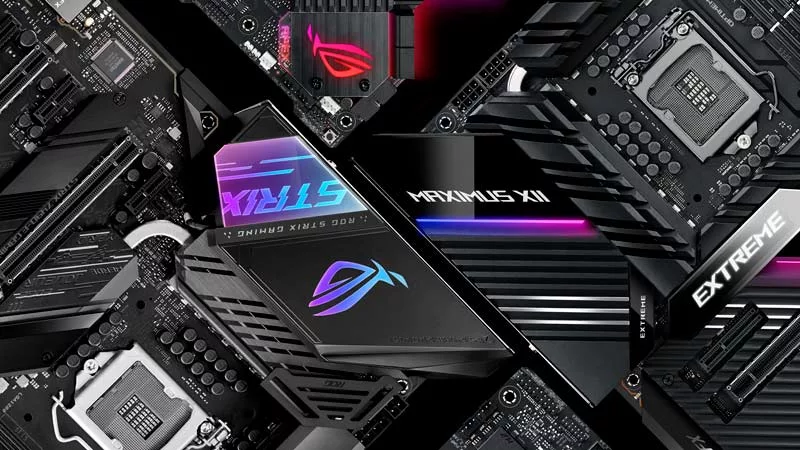
Z490 motherboard guide: ROG Maximus XII and ROG Strix boards unleash the power of Intel 10th Gen Core CPUs
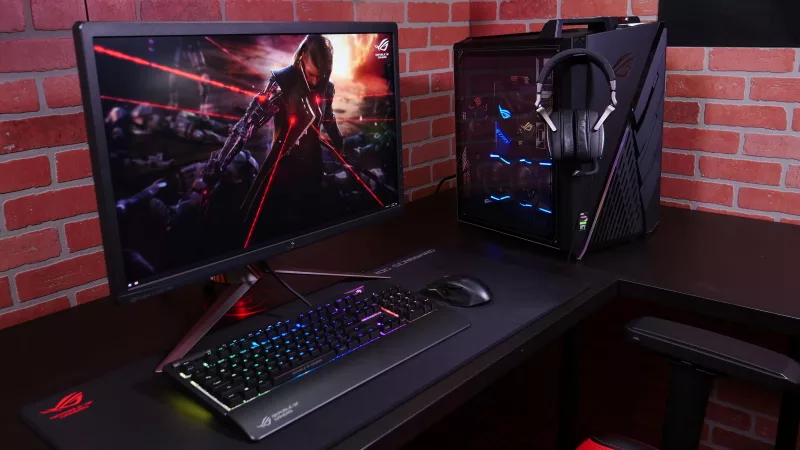
Going hands-on with the ROG Strix GA35's killer combo of Ryzen 9 3950X and GeForce RTX 2080 Ti power
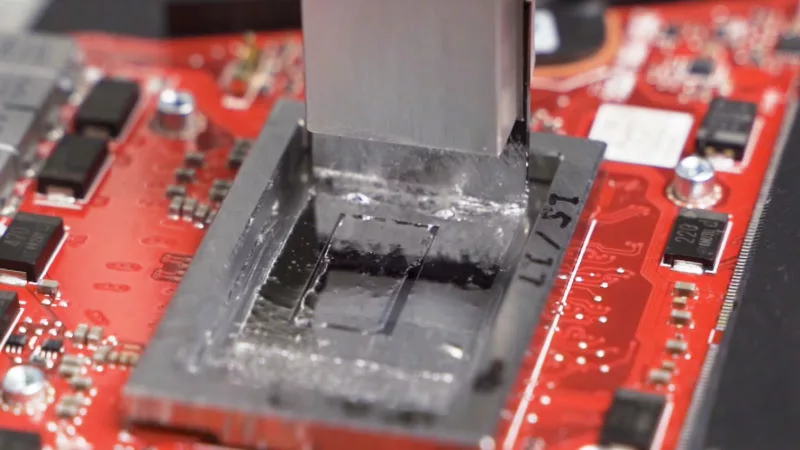
Our patented process brings exotic liquid metal thermal compound to new ROG gaming laptops
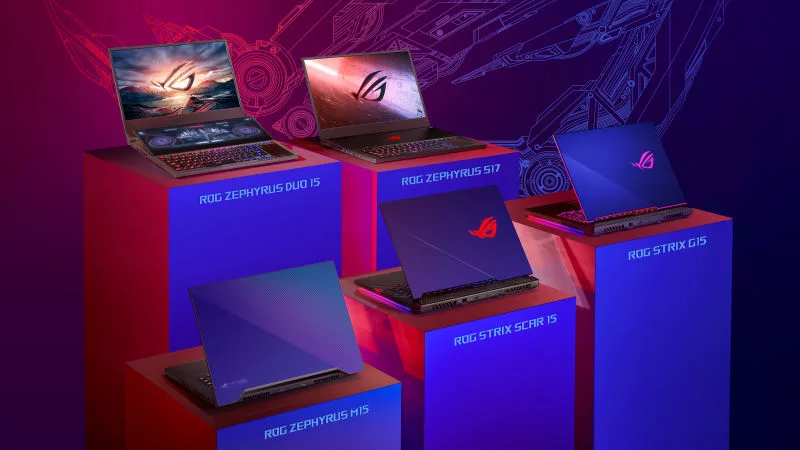
Spring 2020 gaming laptop guide: ROG gets cooler than ever with liquid metal and a second screen
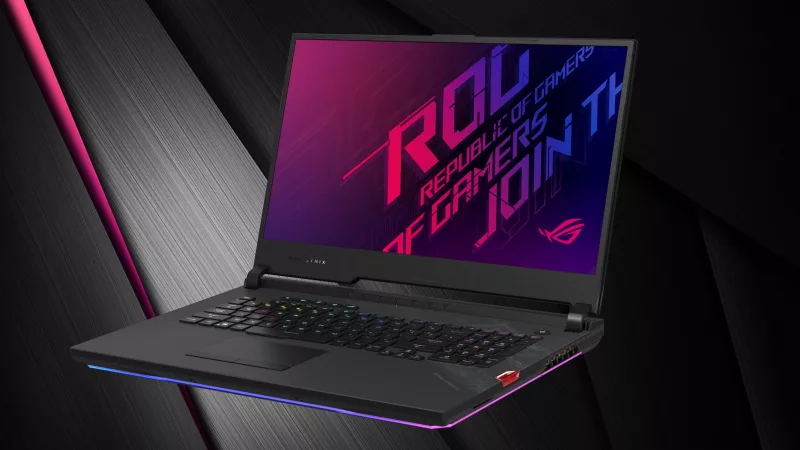
The dominating 300Hz Strix SCAR 17 powers up with a GeForce RTX 2080 SUPER GPU
최신 기사
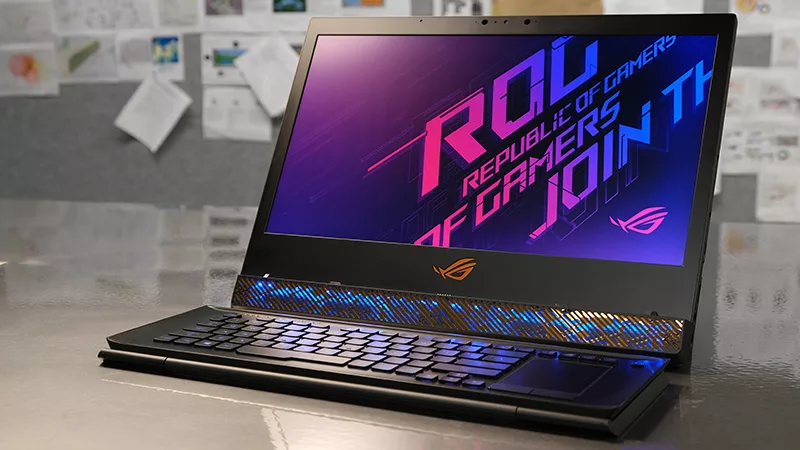
The ROG Mothership's otherworldly fusion of power and portability boosted my work and play
We go hands-on with the ROG Mothership to see how its unique fusion of power and portability levels up gaming and creating.
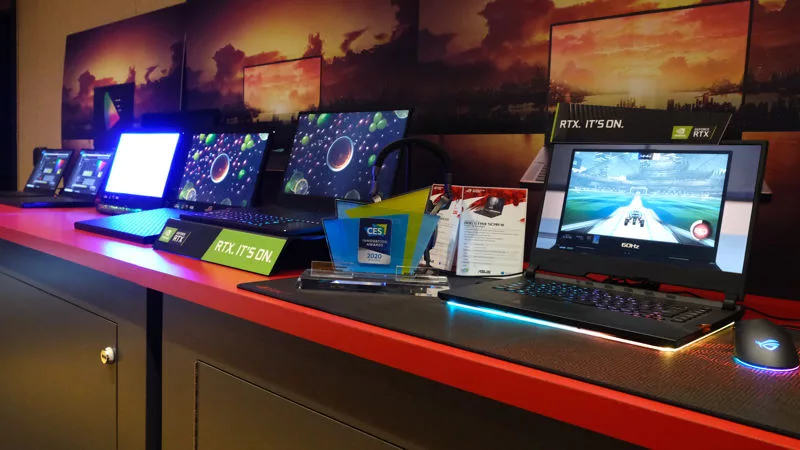
ASUS and ROG extend display leadership for creators and gamers at CES 2020
ASUS and ROG continue to push the bounds of display technology to enhance gaming and creative experiences. See how we're doing it at CES 2020.
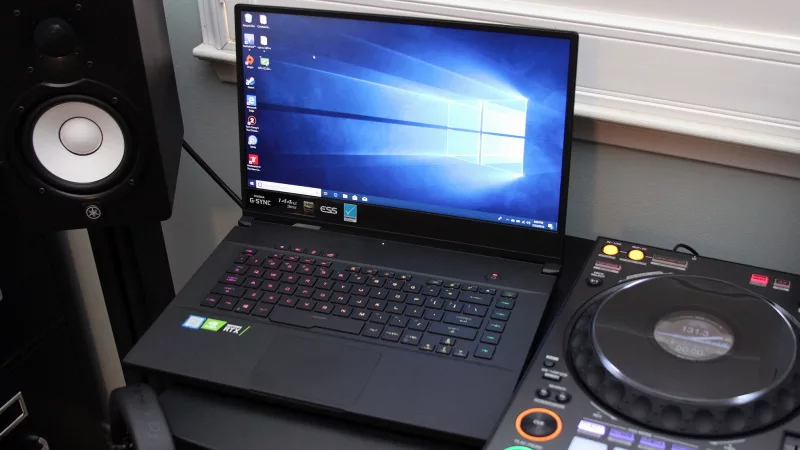
The ROG Zephyrus S GX502 morphed from my portable partner to a gaming powerhouse
Thanks to its slim chassis and power-packed internals, the ROG Zephyrus S GX502 can seamlessly bridge work and play.
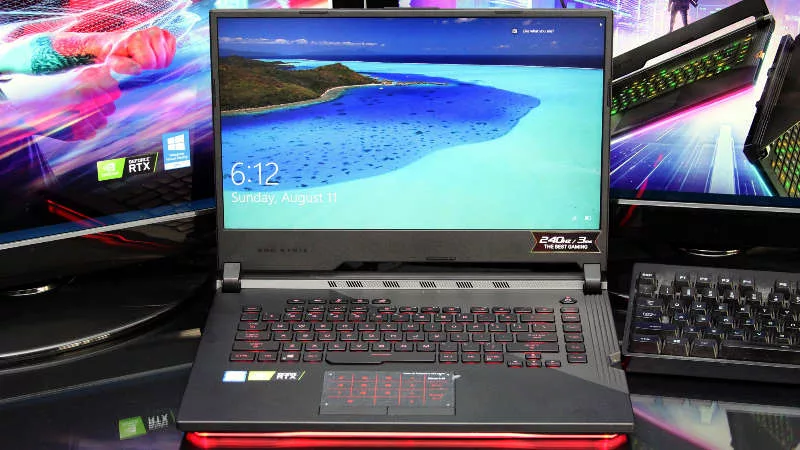
Basking in the glory of 240Hz gaming with the ROG Strix SCAR III
We go hands-on with the ROG Strix SCAR III to see how it brings the magic of high-refresh-rate gaming on the road.
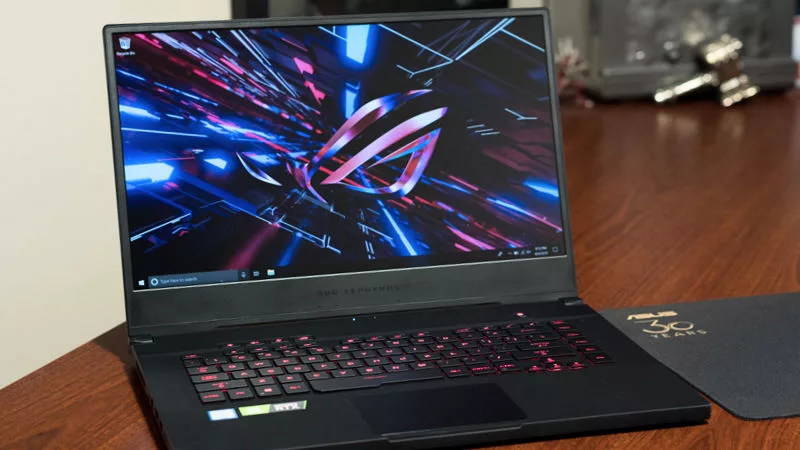
The Zephyrus M GU502 works just as hard as it games
Gaming laptops are rarely any fun to carry, but the Zephyrus M GU502 is a portable powerhouse for work and play.
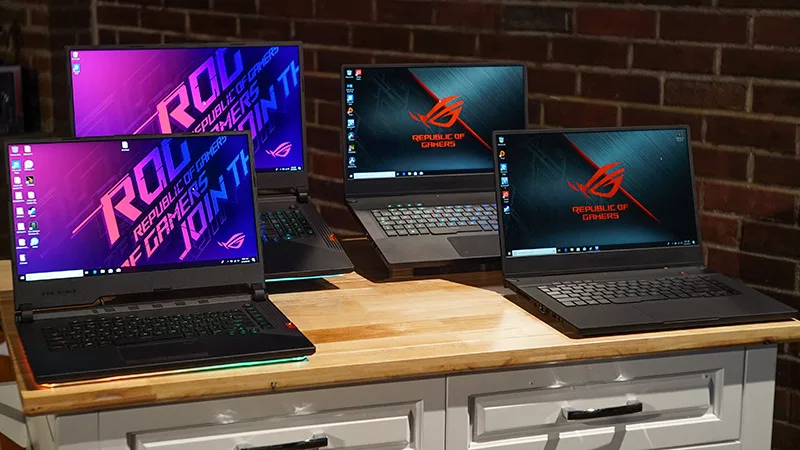
Spring 2019 gaming laptop guide: ROG returns to redefine expectations
A complete revamp of the ROG laptop family mixes all-new models with refreshed systems to balance the needs of gamers, content creators, and power users.